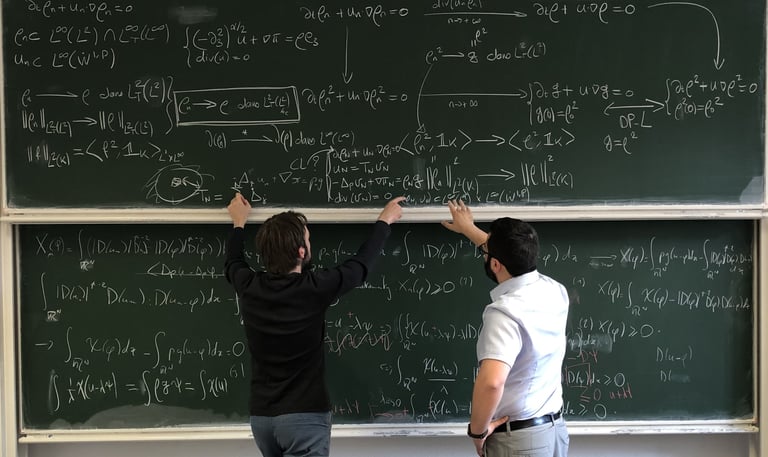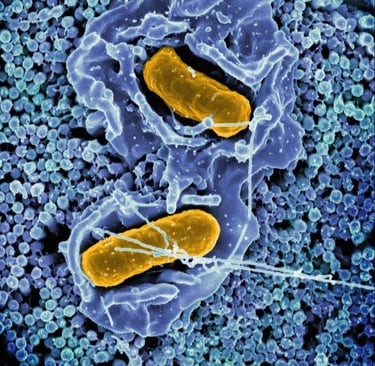My interests are diverse and primarily focus on the applications of mathematics to the study of phenomena arising in physics and biology, both from a theoretical perspective (well-posedness, asymptotic analysis) and a numerical one, particularly through the use of tools derived from artificial intelligence.


Working with Dimitri COBB
Variational inequality solutions and finite stopping time for a class of shear-thinning flows
L Chupin, N Cîndea, G Lacour Annali di Matematica Pura ed Applicata (2024).
Publisher access
RESEARCH
Null controllability of quasilinear parabolic equations with gradient dependent coefficients
N Cindea, G Lacour
arXiv preprint arXiv:2304.08022
Weak Solutions for a non-Newtonian Stokes-Transport System
D Cobb, G Lacour
arXiv preprint arXiv:2401.02599
Publications
Preprints
Mathematical Analysis of non-Newtonian fluids.
A distinctive property of fluids is their viscosity: for example, a fluid is called perfect when its viscosity is assumed to vanish, in which case it is described by the Euler equations, while a viscous fluid is governed by the Navier–Stokes equations. In many situations, viscosity directly depends on the way the fluid flows, in which case the fluid is referred to as non-Newtonian. Much of my research is devoted to analyzing such fluids, one of the main difficulties being the additional nonlinearity introduced into the Navier–Stokes equations.


Thermal Energy Storage and Phase Transition
Thermal energy storage is currently a major challenge from both economic and ecological perspectives. The goal is to store and release latent thermal energy efficiently, with applications ranging from insulation in the construction industry (phase-change walls) to batteries for electric and hybrid vehicles (e.g. battery thermal management systems).
From a mathematical standpoint, this raises the question of how to model such phenomena, which naturally lead to nonlinear partial differential equations with multiple couplings related to phase-transition processes. Theoretical analysis and numerical simulations of these problems provide a deeper understanding of these challenges.
Publications
Preprints


To be added
To be added
Mathematical Biology
My research in biology essentially falls into two areas. The first concerns non-Newtonian fluid mechanics, focusing on the study of blood and related problems (such as hemodialysis).
The second concerns microbiology, specifically the modeling and analysis of microbial consortia. These problems naturally connect to interacting-particle systems, where underlying mechanisms of cooperation and competition play a central role.


Publications
To be added
Preprints
To be added
Mathematics of Neural Networks
Finally, my research is also closely connected to neural networks in several ways. First, I am concerned with the mathematical study of training processes for large neural networks, which can be described in a manner similar to systems of interacting particles. When the number of parameters is large—as is typically the case—the relevant information is contained in their distribution. In other words, the training process can be viewed as a macroscopic description of the system’s collective behavior. In some cases, this perspective leads back to the analysis of nonlinear optimization problems.
I am also interested in the implementation of physics-informed neural networks (PINNs) in various contexts, such as solving inverse problems. Among other things, PINNs make it possible to compensate for a lack of data and can offer significant computational advantages.


Publications
To be added
Preprints
To be added
